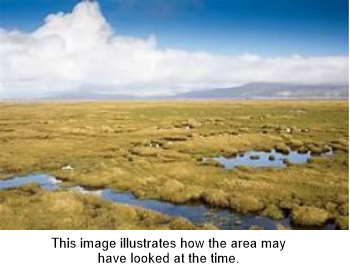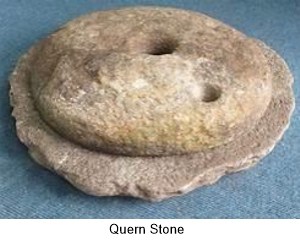Were the Romans ever in Eastertown?
It is highly probable that Romans visited many parts of Sedgemoor. Roman settlements are known to have existed in the Somerset Levels from the first century AD and some continued in use until the fourth century AD. The recorded settlements are mainly confined to the valleys of the Rivers Brue and Axe although some are sited along the coastline.

In the upper Axe valley, many of the Romano-British settlements appear to be associated with flood defences. These settlements are also linked by an irrigation system suggesting that the sites formed
part of a wider network, possibly planned as such to reduce the risk of flooding over a wide area.
 In some cases, the presence of large-scale
drainage works together with finds of quern-stones
(small, hand-operated grain grinders) suggest that
the land may have been drained to allow
agricultural activity.
In some cases, the presence of large-scale
drainage works together with finds of quern-stones
(small, hand-operated grain grinders) suggest that
the land may have been drained to allow
agricultural activity.
A Romano-British settlement on Stoke Moor, near
Wedmore, is known to have existed since it was
partially excavated in 1925. It is situated on lowlying ground in the Axe Valley in the area of the
Somerset Levels.
The Wedmore site consists of a series of low earthworks as well as features visible only on aerial
photographs. They represent the known extent of the settlement which covers an area of 18.5
hectares. The settlement was unenclosed and developed alongside a former channel of the
River Axe; this old river channel remains visible as an earthwork to the west of the settlement.
Environmental evidence from the area suggests that salt-marsh conditions prevailed in this area
during the Roman period contradicting earlier theories that the area would have been
submerged. One reason for the site’s existence was in order to exploit the natural resources of
the area.
The River Axe enters the Bristol Channel at Uphill where it is sheltered by Brean Down and it is
possible that there was a port at Uphill in Roman times, but no archaeological evidence has
been found for this to date. Given its proximity to the nearby lead mining settlements around
Charterhouse on the Mendip hills, it has been speculated that Lead ingots might have been
taken to Rome using the navigable River Axe.
Small shards of Roman pottery have been found close to a small branch of the Axe that passes
close to the Riverside property at the end of North Road in Eastertown. A survey was conducted
in 2011 by the Lympsham Archaeological Group with the kind permission of Mr Geoff Janes and
the assistance of Mr Robert Smission from the University of Bristol.
A Copy of that survey can be viewed (here).


